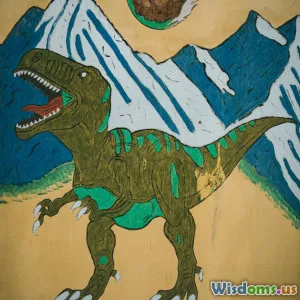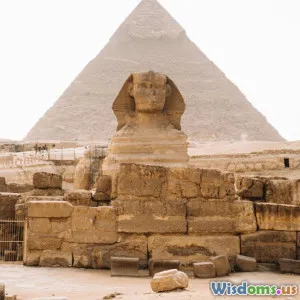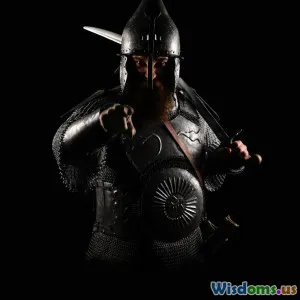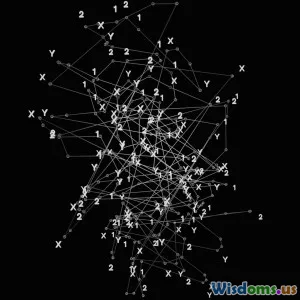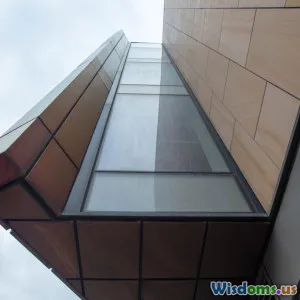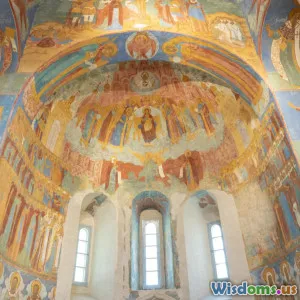
Are Ancient UFO Murals Proof of Forgotten Celestial Visitors?
10 min read Explore fascinating ancient UFO murals and their implications for forgotten celestial visitors. (0 Reviews)
Are Ancient UFO Murals Proof of Forgotten Celestial Visitors?
Imagine stepping back thousands of years, deep into the heart of ancient civilization, where early artists left mysterious murals on cave walls, temple ceilings, and sacred tombs. Among the countless depictions of animals, gods, and ritual scenes, certain figures stand out: strange, hovering discs, humanoid shapes surrounded by glowing auras, or enigmatic objects resembling modern flying saucers. Could these ancient artworks be more than mere mythology or artistic imagination? Are they evidence of encounters with forgotten celestial visitors—perhaps extraterrestrial beings who once graced our ancestors?
This article explores this provocative question by delving into notable ancient UFO murals worldwide, examining the interpretations that have captured the imagination of researchers and enthusiasts alike. We'll also unpack the issues scholars face in understanding these enigmatic images and consider whether they represent forgotten visitors from the cosmos or reflections of human creativity and belief.
Decoding Ancient Murals: An Overview
Before plunging into examples, it's vital to understand the context and purpose of ancient murals. Throughout history, mural art served multiple roles: religious storytelling, recording history, celebrating power, or capturing cosmological theories. Murals, often found in caves, tombs, and temples, preserved cultural narratives for posterity.
However, interpreting ancient images is fraught with challenges. Symbolism and artistic styles varied widely, and modern viewers risk imposing contemporary perspectives on ancient art. A circular shape with appendages might represent a solar disk, a chariot, or, as some passionate advocates argue, a UFO.
Despite these pitfalls, certain murals consistently challenge orthodox interpretations because of their uncanny similarity to modern reports of unidentified flying objects.
Notable Examples of Ancient UFO Murals
1. The Nazca Lines and the Palpa Murals, Peru
While primarily recognized for their massive geoglyphs, such as a hummingbird and spider, the Nazca people and consecutive Palpa cultures also created intriguing murals. Certain accompanying images depict humanoid figures with oversized helmets and mechanical suits, seemingly interacting with objects resembling flying disks.
Research by archaeologist Anthony Aveni points out that these images, estimated to be over 2000 years old, do not easily align with naturalistic depictions but evoke otherworldly beings. Many speculate these figures could represent celestial visitors, possibly influencing the famous Nazca Lines’ construction, which themselves are sometimes theorized as landing markers.
2. The Tassili n’Ajjer Murals, Algeria
Discovered in the 1950s, the Tassili n’Ajjer caves contain one of the richest troves of prehistoric art, dated up to 12,000 years old. Among animals and ritual scenes, researchers have identified humanoid figures floating above the ground, encased in circular outlines akin to bubbles or aircraft.
Described as "the astronaut painting," some people interpret these figures as evidence ancient humans witnessed real space suits or flying machines. Skeptics, however, suggest these simply represent shamanic visions or symbolic representations of spirits.
3. The Ajanta Caves Murals, India
Dating back to the 2nd century BCE, the Ajanta caves hold exquisite Buddhist frescoes depicting deities and celestial beings. A few panels show circular flying vehicles with incandescent rays and figures inside them, conjuring images very similar to modern UFO reports.
Indian mythological texts also describe the use of flying chariots called "Vimanas," and some enthusiasts propose the murals might be artistic renderings inspired by actual craft sightings rather than pure fantasy.
4. The Altmühl Valley Cave Paintings, Germany
Deep in German caves, archaeologists uncovered Ice Age murals containing repetitive circular objects, often depicted with trailing lines resembling propulsion or energy beams. Dating back 12,000-15,000 years, these paintings are among the oldest purportedly showing flying discs.
Dr. Erich von Däniken, famous for promoting the ancient astronaut theory, references these in his work, suggesting that prehistoric humans encountered spacecraft, immortalized through their art.
Interpreting Ancient UFO Murals: Scientific Perspectives and Debates
The notion that extraterrestrials visited ancient Earth has fascinated and divided researchers for decades. Proponents of the “ancient astronaut theory” argue that certain unexplained murals lend credence to the idea that otherworldly beings influenced early human culture and technology.
Supportive Arguments:
- Consistent Iconography: Similar circular, disc-like images appear in globally disparate regions and epochs, hinting at a common phenomenon rather than coincidental imagination.
- Mythological Correlation: Many cultures recount stories of gods descending from the heavens in fiery chariots, strikingly resembling modern descriptions of spacecraft.
- Technological Anachronisms: Some murals feature humanoid figures with helmet-like headgear or tools far advanced for their time.
Critical Counterpoints:
- Cultural Symbolism: Scholars note that circular shapes often symbolize the sun, cycles, or spiritual elements rather than flying machines.
- Lack of Physical Evidence: No definitive artifacts confirm contact with extraterrestrials; murals could reflect complex mythologies or altered states of consciousness.
- Pareidolia Effect: Humans are wired to find familiar patterns (like disks or faces) in ambiguous shapes, coloring interpretation.
Renowned archaeologist Dr. Maria Guillen remarks, "While these murals are intriguing, it is scientifically prudent to differentiate between imaginative art, myth, and verified contact. Extraordinary claims require extraordinary evidence."
Broader Impacts and Contemporary Significance
Why do these ancient depictions captivate modern audiences so powerfully? Part of the allure lies in the mystery—the intersection of art, history, and the possibility that humanity's story is more entwined with the cosmos than traditionally believed. Influential books like Erich von Däniken's "Chariots of the Gods?" and numerous documentaries have introduced this concept to popular culture, inspiring millions to question and explore.
Moreover, these murals encourage multidisciplinary investigations, blending archaeology, anthropology, astronomy, and even psychology. They challenge us to consider how ancient people interpreted their world and how myths might encode information about real experiences.
Contemporary ufologists and space agencies alike have expressed interest in the cultural legacy of these murals, culminating in exhibitions and research initiatives exploring evidence of non-human intelligence's historic interaction with Earth.
Conclusion: Art, Myth, or Celestial Proof?
Ancient UFO murals remain some of the most intriguing windows into humanity's past. Their mysterious figures spark an impassioned debate between those who see proof of forgotten celestial visitors and those who view them as symbolic expressions of early human spirituality and imagination.
While no irrefutable evidence confirms extraterrestrial contact, these murals undeniably enrich our understanding of ancient civilizations' complexity and the enduring human fascination with the skies above. They invite us to keep exploring—both the depths of history and the vastness of the cosmos.
Whether these murals portray aliens or allegories, their enigmatic beauty continues to inspire curiosity, wonder, and perhaps an invitation to look beyond the stars for answers to humanity's oldest questions.
References & Further Reading
- Aveni, Anthony F. Between the Lines: The Mystery of the Ancient Nazca Drawings. University of Texas Press, 2001.
- von Däniken, Erich. Chariots of the Gods? Unsolved Mysteries of the Past. Berkley Books, 1969.
- Guillen, Maria. "Interpreting Prehistoric Murals: Myth vs. Reality," Journal of Archaeological Research, 2018.
- NASA "Ancient Astronaut Hypothesis: Cultural Impact" Public Archive, 2022.
Rate the Post
User Reviews
Popular Posts










